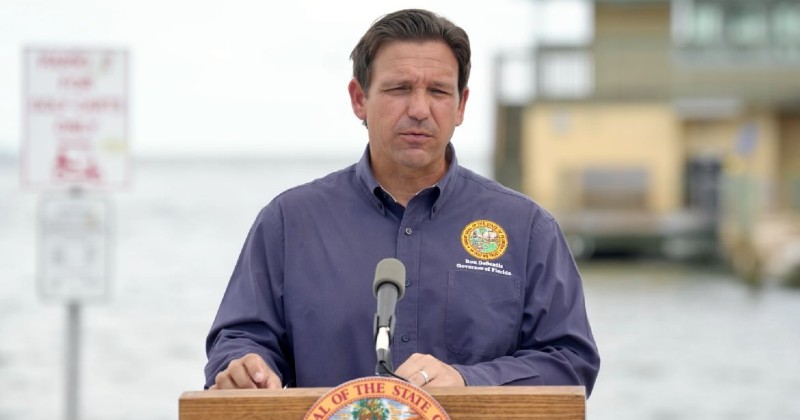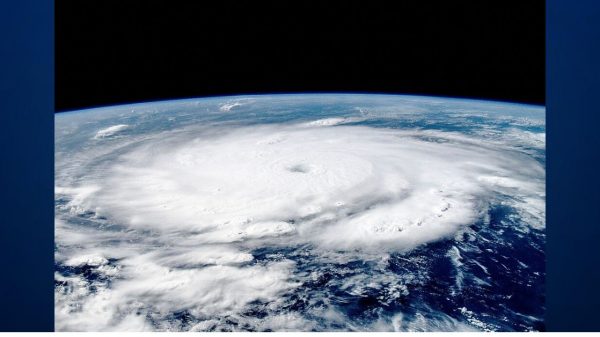On Saturday, Florida Gov. Ron DeSantis declared a state of emergency for 35 different counties in Florida to help logistical planning before a potential major hurricane impacts Florida. Below is a statement from Gov. DeSantis:
“As Tropical Storm Milton continues to strengthen in the Gulf, I have issued EO 24-214 ahead of potential landfall on Florida’s west coast this week,” DeSantis said. “This EO declares a state of emergency in 35 Florida counties. As many continue to recover from Hurricane Helene, I have directed the Florida Division of Emergency Management and the Florida Department of Transportation to coordinate all available personnel and resources to supplement local communities as they expedite debris removal in impacted areas. We will continue staging state assets to prepare for efficient search and rescue, power restoration, and roadway clearing.”
The National Hurricane Center in Miami, FL reports:
Milton appears to be slowly organizing. The storm has a dense, central overcast pattern with deep convection persisting near and to the south of the center.
The latest satellite intensity estimates range from 30 to 50 kt, and based on that data, the initialintensity is nudged upward to 40 kt. Milton is a small storm at the moment, with its estimated tropical-storm-force winds extending only about 30 n mi from the center.
The storm is moving slowly northeastward at 4 kt as it remains embedded in weak steering currents. However, a shortwave trough is expected to push southward into the northern Gulf of Mexico. This trough and a reinforcing one should cause Milton to turn eastward on Sunday, and move progressively faster to the east and then northeast across the Gulf of Mexico and Florida during the next 3 to 4 days.
The guidance is in fair agreement, but there is some spread in both direction and timing. Overall, the models have trended slower this cycle, and the NHC track forecast has been adjusted in that direction.
This prediction is near the middle of the guidance envelope and close to the typically best-performing consensus aids.It should be noted that the average NHC track error at day 4 is around 150 miles. Therefore, users are reminded to not focus on the exact track.
Milton will likely steadily strengthen during the next few days as it moves over the very warm Gulf of Mexico waters, remains in a moist air mass, and in a diffluent and low to moderate wind shear environment. The big question is how quickly and by how much will the storm intensify.
There is a big spread in the intensity models, with the hurricane regional models notably above the global and statistical-dynamical models. The new intensity forecast is a little higher than the previous one and in good agreement with the HCCA and IVCN aids. It is hoped that the models will come into better agreement tomorrow after ingesting some of the Hurricane Hunter aircraft observations.
Regardless of the details, there is increasing confidence that a powerful hurricane with life-threatening hazards will be affecting portions of the Florida west coast around the middle of next week. Residents there should closely monitor this system and listen to local officials.
Key Messages:
1. Milton is forecast to quickly intensify while it moves eastward to northeastward across the Gulf of Mexico and be at or near major hurricane strength when it reaches the west coast of theFlorida Peninsula midweek. Hurricane Watches could be issued asearly as late Sunday for portions of Florida.
2. There is an increasing risk of life-threatening storm surge and wind impacts for portions of the west coast of the Florida Peninsula beginning late Tuesday or Wednesday. Residents in these areas should ensure they have their hurricane plan in place, follow any advice given by local officials, and check back for updates to the forecast.
3. Areas of heavy rainfall will impact portions of Florida Sunday and Monday well ahead of Milton, with heavy rainfall more directly related to the system expected later on Tuesday through Wednesday night. This rainfall brings the risk of flash, urban, and areal flooding, along with minor to moderate river flooding.
Jackery Explorer 300 Plus Portable Power Station, 288Wh Back...
$219.00 (as of May 20, 2025 16:03 GMT -04:00 - More infoProduct prices and availability are accurate as of the date/time indicated and are subject to change. Any price and availability information displayed on [relevant Amazon Site(s), as applicable] at the time of purchase will apply to the purchase of this product.)Westinghouse 12500 Watt Dual Fuel Home Backup Portable Gener...
$999.00 (as of May 20, 2025 16:03 GMT -04:00 - More infoProduct prices and availability are accurate as of the date/time indicated and are subject to change. Any price and availability information displayed on [relevant Amazon Site(s), as applicable] at the time of purchase will apply to the purchase of this product.)200W Power Inverter for Dewalt 20V, DC 20V to AC 110-120V Ba...
$37.99 (as of May 20, 2025 16:03 GMT -04:00 - More infoProduct prices and availability are accurate as of the date/time indicated and are subject to change. Any price and availability information displayed on [relevant Amazon Site(s), as applicable] at the time of purchase will apply to the purchase of this product.)Jackery Explorer 1000 v2 Portable Power Station,1070Wh LiFeP...
$448.99 (as of May 20, 2025 16:03 GMT -04:00 - More infoProduct prices and availability are accurate as of the date/time indicated and are subject to change. Any price and availability information displayed on [relevant Amazon Site(s), as applicable] at the time of purchase will apply to the purchase of this product.)Champion Power Equipment 4000-Watt RV Ready Portable Inverte...
$574.00 (as of May 20, 2025 16:03 GMT -04:00 - More infoProduct prices and availability are accurate as of the date/time indicated and are subject to change. Any price and availability information displayed on [relevant Amazon Site(s), as applicable] at the time of purchase will apply to the purchase of this product.)

























